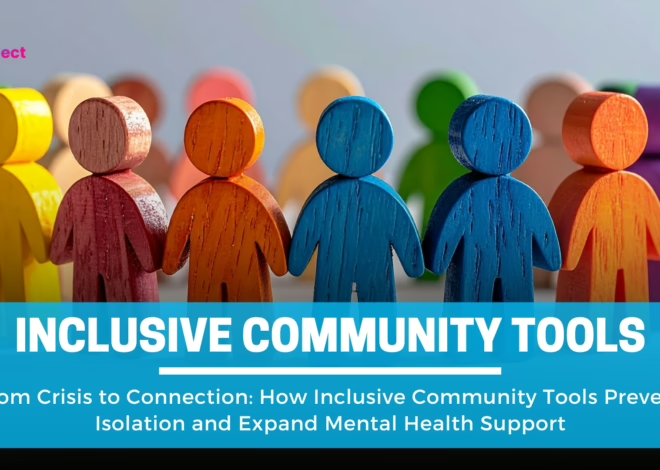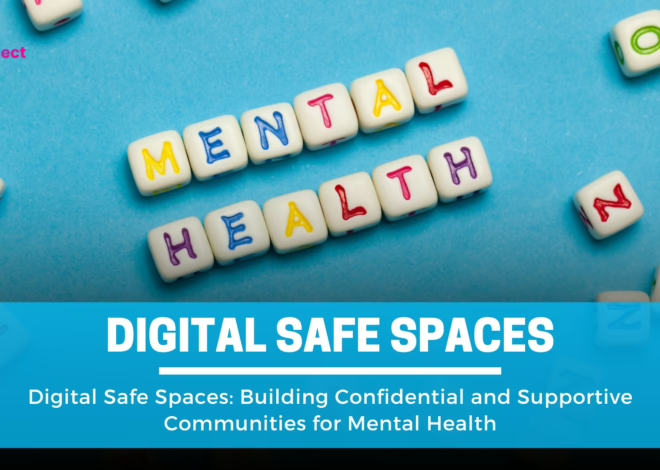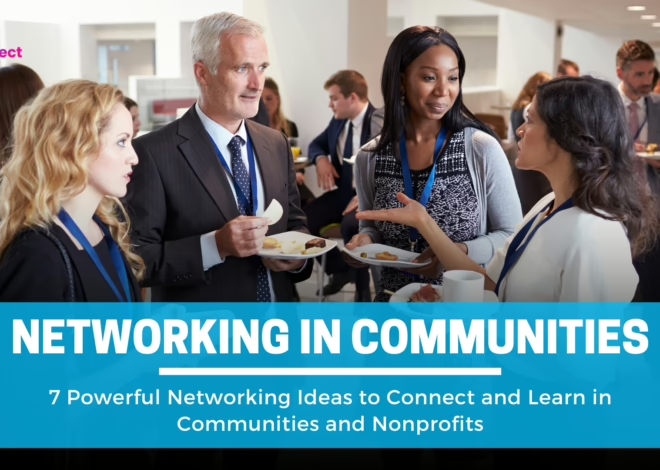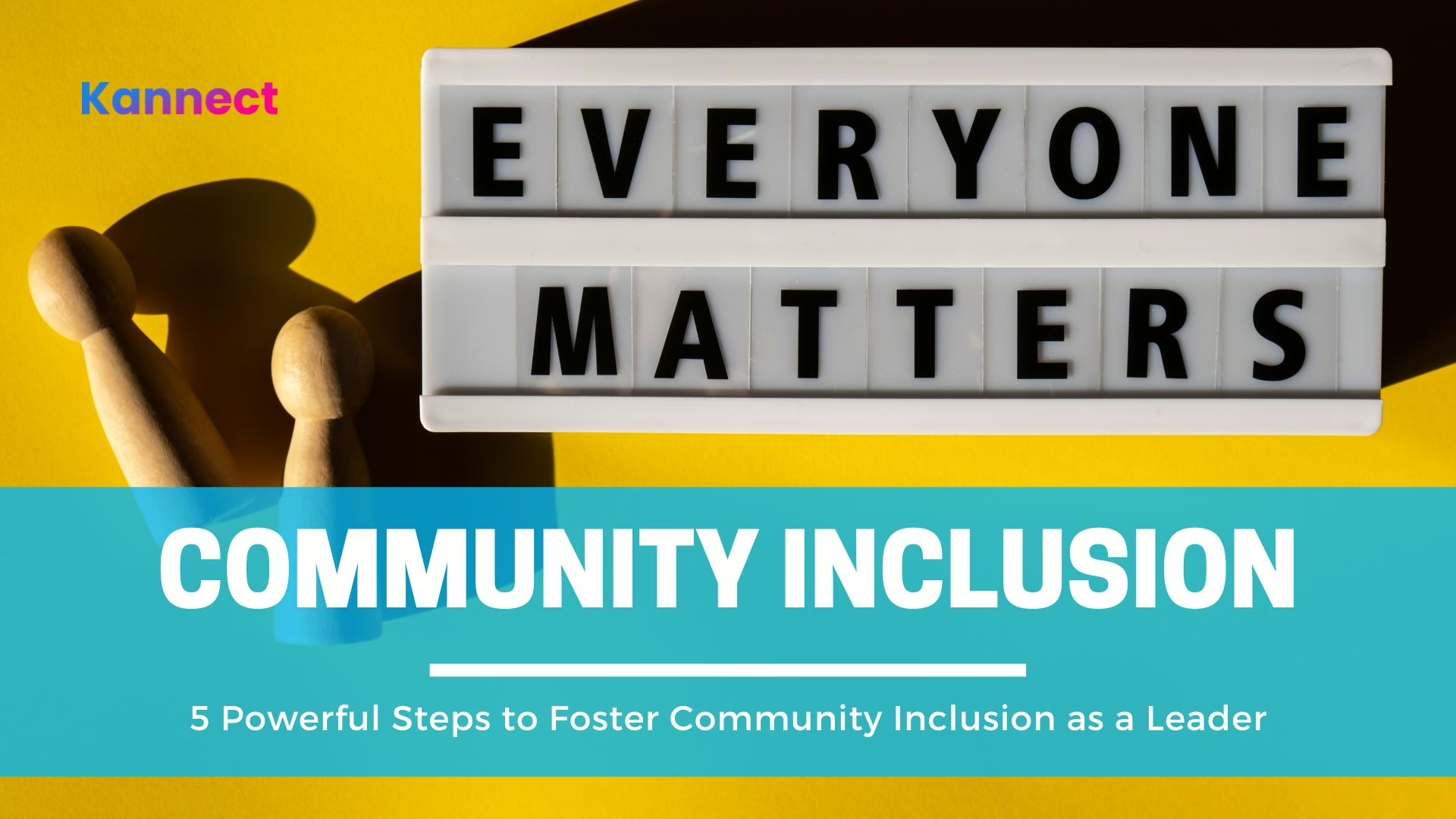
5 Powerful Steps to Foster Community Inclusion as a Leader
Table of Contents
Opening the Circle: Why Community Inclusion Starts With Leadership
Creating an inclusive community goes beyond simply welcoming new members, it’s about cultivating a space where every person feels heard, respected, and valued for who they are. Community inclusion isn’t a checkbox or a buzzword – it’s an ongoing commitment to ensuring diversity, equity, inclusion, and belonging (DEIB) aren’t just talked about, but actively practiced. As a leader, your role in shaping this culture is crucial. Whether you’re guiding a grassroots collective or leading a growing digital platform, the path to inclusion starts with intentionality.
Inclusion is More Than Representation
While it’s important to have diverse voices present, inclusion means those voices are also influencing, contributing, and shaping the direction of the community. Think of a multilingual online community that not only invites members from across cultures but also features multilingual content, peer moderation, and flexible participation formats. It’s not just about who’s at the table, it’s about who’s helping to set the agenda.
Community Inclusion is a Daily Practice
True community inclusion doesn’t happen overnight. It’s a series of consistent, mindful actions – small policies, open-ended questions, platform design choices, and feedback loops that create space for everyone to belong. With platforms like Kannect, community leaders can embed inclusion into the way they communicate, organize events, moderate content, and even recognize member contributions.
Here are 5 Powerful Steps to Foster Community Inclusion, and start creating a space where every member feels like they truly matter.
Step One: Encourage Open Dialogue and Communication
The Importance of Community Inclusion through Active Conversation
One of the foundational pillars of community inclusion is ensuring open lines of communication where everyone feels safe to express themselves. Engaging members in conversations fosters understanding and empathy, allowing them to learn and grow from each other’s experiences.
Open dialogue is not just about hearing voices, it’s about creating intentional structures where every voice has room to speak, be respected, and be acted upon. Especially in diverse communities, honest communication creates the groundwork for trust, shared ownership, and mutual growth.
A community that prioritizes dialogue sends a clear message: “You belong here, and your perspective matters.” That’s the essence of community inclusion. Leaders must model vulnerability, empathy, and openness to encourage others to do the same.
Facilitating Conversations that Count
Utilize Kannect’s Communication Management tools to maintain a steady stream of interaction through announcements, group chats, and targeted messaging. By creating spaces for open dialogue, you can cultivate an atmosphere where honest conversations thrive, helping to break down barriers and build trust.
You can also segment your audience using Kannect to create smaller discussion groups tailored to interests, identities, or needs, ensuring that no voice gets drowned out in a crowd. When you pair communication with intention, every message becomes a tool for inclusion.
Surveys, anonymous feedback forms, live Q&As, and moderated discussions all help deepen engagement while affirming that community inclusion is a lived experience, not just an ideal.
🔶 Leading with Example
An example of community inclusion and best practice is organizing monthly town hall meetings, encouraging members to share their thoughts and ideas about the community’s development. These gatherings provide a platform for active participation and ensure everyone has a voice.
Another impactful initiative is hosting “Community Circles” – small, member-led sessions where people can reflect on shared values, discuss current challenges, and collaborate on ideas. These aren’t just meetings, they are rituals that reinforce the idea that community inclusion is a co-created journey.
Communities that grow together speak together. And when members feel heard, they stay, not just as participants, but as contributors to an inclusive, evolving culture.
Step Two: Promote Diversity with Inclusive Events
Planning Inclusive Activities for a Diverse Community
Events are a great way to foster community inclusion, bringing people together to celebrate diversity. Thoughtfully planned activities create spaces where differences are not only accepted but celebrated.
To strengthen community inclusion, it’s important to consider not just who is invited, but how people are able to participate. This includes cultural sensitivity, accessible venues, diverse formats (in-person, hybrid, or virtual), and varied engagement styles – like collaborative activities, storytelling, or creative showcases.
A truly inclusive event reflects the identities and voices of the community it serves. For example, incorporating multilingual materials or choosing event themes that rotate across different cultures helps make every group feel seen. When people see themselves reflected in community moments, they are more likely to stay involved and contribute meaningfully.
Creating Events Everyone Can Participate and Engage
Use Kannect’s Event Management feature to organize inclusive events that cater to a range of interests and cultures, from cultural festivals to workshops celebrating different abilities. Ensuring accessibility for all members, particularly focusing on community inclusion for people with disabilities, can greatly enhance engagement and participation.
This might include offering sign language interpretation, wheelchair-friendly locations, low-sensory spaces, or remote participation options for those unable to attend physically. These thoughtful additions not only meet access needs, they signal that every member’s presence matters.
Community inclusion thrives when event planning is not an afterthought but a strategy grounded in equity. With Kannect, event templates and customization features can be leveraged to embed inclusion from the start, not just as an add-on.
🔶 Leading with Example
Consider organizing a cultural food festival inviting members to share their culinary traditions. Promoting such events with accessibility features ensures everyone can participate and contribute, aligning with the significance of community inclusion.
Another compelling example is a youth-led event series where younger members curate panels highlighting underrepresented voices – people from different ethnicities, gender identities, and lived experiences. Supported by Kannect’s planning and promotion tools, these events become not just engaging moments, but living proof of what community inclusion looks like in action.
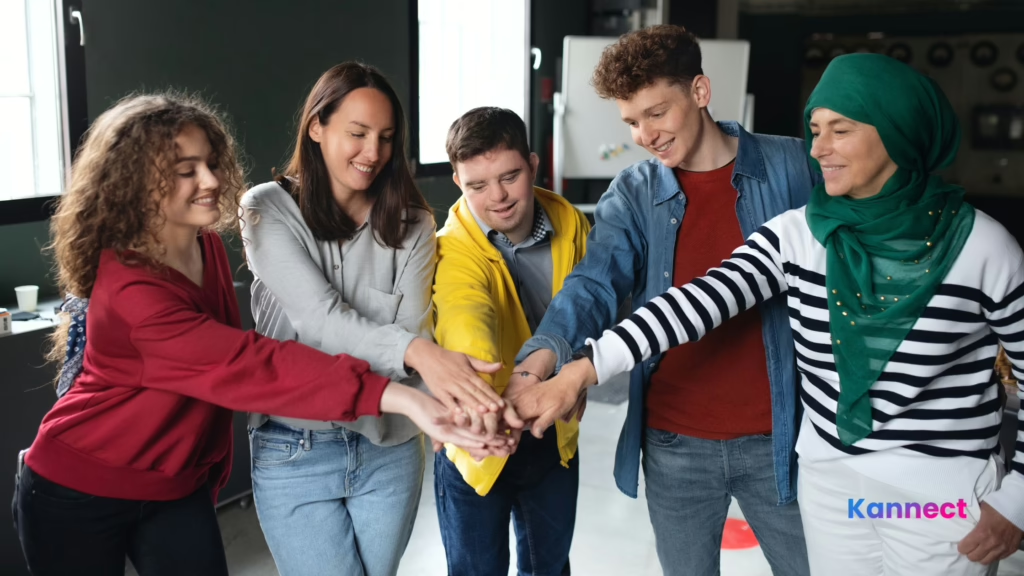
By showcasing the richness of your community and intentionally designing for access, you create spaces where everyone feels proud to belong and that is the heartbeat of sustainable community inclusion.
Step Three: Empower Members Through Education
Community Education as a Tool for Inclusion and Growth
Empowering members with knowledge about diversity, equity, and inclusion is vital. Education promotes empathy and understanding, enabling members to become advocates for community inclusion within and beyond the community.
Education isn’t a one-time initiative, it’s an ongoing investment in people. A truly inclusive community nurtures a culture where members are encouraged to learn, unlearn, and relearn. When individuals have access to quality educational resources around identity, culture, and equity, they begin to see their role not just as members, but as stewards of community inclusion.
Community education deepens empathy, reduces unconscious bias, and equips members to act thoughtfully in diverse spaces. The result? A culture where inclusion is both a shared responsibility and a source of pride.
Designing Educational Content for Empowerment
Leverage Kannect’s Content Management system to curate resources and materials focusing on DEIB topics. Content tailored to raise awareness and educate members about inclusive practices cultivates a more informed and equitable community environment.
You can build structured learning journeys – whether through interactive modules, curated reading lists, or on-demand video content, focused on real-life issues faced by underrepresented members. Think beyond basic definitions and dig into lived experiences, inclusive language, and real-world application.
By using Kannect to personalize and distribute this content, you make community inclusion actionable and accessible. You’re not just educating, you’re actively equipping your members to foster a more inclusive culture in everything they do.
🔶 Leading with example
Implement a series of DEIB workshops or webinars, covering topics such as allyship, unconscious bias, and community inclusion services. Empowered members are more likely to advocate for inclusion, enhancing overall community health.
One powerful example: host an annual “Inclusion Learning Month,” where each week is themed around a different topic, e.g., Neurodiversity Awareness, Gender Equity, Anti-Racism in Communities, or Inclusive Communication. These sessions can be co-led by community members with lived experience, giving education a voice that’s rooted in authenticity.
When members witness the community prioritizing education not as a checkbox but as a continuous commitment, it builds trust and creates ripple effects far beyond the virtual or physical walls of your space. Community inclusion, in this way, becomes a shared language and every learner becomes a leader.
Step Four: Showcase Success Stories and Achievements
Celebrating Inclusivity through Member Stories
Highlighting members’ achievements, especially those who actively contribute to fostering inclusivity, is an essential step in driving community inclusion. Recognizing and celebrating success stories inspires others and reinforces positive behaviors.
People connect through stories more than statistics. When members see themselves reflected in shared narratives – especially stories of resilience, ally ship, and impact, it affirms their place in the community. It also signals that inclusion isn’t just a principle on paper; it’s practiced, appreciated, and celebrated.
Showcasing these stories helps to normalize inclusive actions. Whether it’s someone championing accessibility, mentoring across cultures, or creating safe spaces for expression, lifting these voices encourages others to step up and support community inclusion as a daily commitment.
Amplifying Stories of Inclusion
With Kannect’s Campaign Management features, you can spotlight member stories, achievements, and their impact on the community. Share narratives in newsletters, social media, and community platforms to reflect and reinforce inclusive values.
You can create themed campaigns such as “Inclusion Champions of the Month” or “Faces of Community Inclusion,” highlighting real people making a difference. Using video testimonials, photo stories, or interactive Q&A formats makes the storytelling more personal and relatable. These campaigns not only validate individual contributions, they also create a ripple effect by inspiring others to embody inclusive values in their own way.
Additionally, track engagement with these stories using Kannect’s analytics. The more you see members sharing, commenting on, or being influenced by inclusion-focused content, the more you can refine and scale these efforts.
🔶 Leading with example
Feature a story about a member advocating for accessible spaces within the community, detailing the positive changes made. Such narratives serve as motivating examples of community inclusion and best practices in action.
For instance, you might spotlight a member named Claire, who noticed that several online events lacked closed captioning and ASL interpretation. After raising the concern during a community forum, she collaborated with event organizers to ensure accessibility standards were adopted across all live sessions. Her story not only resulted in tangible change, it also opened up important conversations around digital accessibility and equity.

By celebrating individuals like Claire, the community sends a clear message: community inclusion is everyone’s responsibility and every small action counts.
Step Five: Foster Continuous Improvement and Adaptation
Listening and Evolving for Sustained Community Inclusion
Achieving community inclusion is an ongoing effort that requires constant feedback and evolution. Being open to change and adapting to members’ needs ensures the community remains a vibrant and inclusive space.
Communities are living ecosystems, what works today might not work tomorrow. True inclusion isn’t a checkbox; it’s a continuous journey that thrives on curiosity, humility, and iteration. Regularly assessing what’s working and what’s not allows you to catch blind spots, surface overlooked voices, and reaffirm your commitment to building a truly inclusive environment.
More importantly, it tells members: Your experience matters. Your feedback shapes this space. That kind of empowerment deepens trust and ownership, two critical ingredients of community inclusion.
Utilizing Feedback for Continuous Growth
Implement regular check-ins and surveys through Kannect’s Analytics and Reporting tools to gather insights and feedback. Understanding member needs and making necessary adaptations supports a sustainable cycle of inclusion and growth.
You can go beyond standard surveys, try quarterly “community retrospectives,” open-ended feedback forms after events, or even live feedback chats in smaller groups. Look for patterns across diverse member segments: Are first-time members feeling seen? Are accessibility requests being honored? Are cultural and identity-based needs being met?
With Kannect’s tools, you can break down data by engagement levels, demographic info, or content preferences. This not only reveals what drives participation but also uncovers areas where community inclusion efforts may be falling short.
By closing the loop, acknowledging the feedback and showing how it’s being implemented, you create a feedback culture where inclusion is collaborative, not top-down.
🔶 Leading with example
Initiate a member feedback survey to gauge satisfaction with inclusion efforts and identify areas for improvement. Adjusting strategies based on feedback underscores a commitment to fostering a healthy and inclusive community environment.
Take, for instance, a community that introduced gender pronoun sharing in profiles. After rollout, members with nonbinary identities shared that the feature felt performative because it lacked broader education or support. In response, the team hosted listening circles, followed by optional trainings on inclusive language and identity awareness.
This adaptive approach not only improved the member experience, it became a case study in responsive community inclusion. It showed that inclusion isn’t about perfection; it’s about the willingness to listen, learn, and grow together.
By fostering a culture of continuous improvement, your community sends a powerful message: We evolve because we care. And everyone belongs in shaping that evolution.
Wrap-Up: The Transformative Power of Community Inclusion
Fostering community inclusion is a journey, not a destination. As a leader, creating an environment where every member feels valued, heard, and empowered is paramount. By integrating diverse voices, celebrating achievements, and adapting to evolving needs, communities grow stronger and more connected. Use tools like Kannect to drive inclusive initiatives and facilitate true belonging. Embrace this journey, for it’s through inclusion that communities thrive and flourish.
From Intention to Impact: Making Community Inclusion Actionable
Community inclusion starts with intention, but it becomes transformative through consistent, thoughtful action. It’s not just about having the right values written down in a mission statement, it’s about making those values visible in the everyday rhythm of your community. Whether that’s ensuring your events include accessibility accommodations, amplifying underrepresented voices, or designing content that educates and empowers, every decision either contributes to or detracts from inclusion.
Imagine a digital community for young creatives, where one member who uses a screen reader shared that visual content wasn’t accessible. Instead of brushing it off, the community team responded by reworking post formats, adding alt-text guidelines, and hosting a co-led workshop on digital accessibility. That one act of listening and adapting didn’t just support one member, it sparked a culture shift that benefited everyone.
This is the heart of community inclusion: noticing the gaps, inviting feedback, and taking real action to close them.
Sustaining Belonging Through Evolution
True community inclusion doesn’t happen in a vacuum – it lives and breathes through feedback, flexibility, and growth. As your community evolves, so too should your inclusion practices. What your members need today may shift as they grow, change, or face new challenges. The more agile and attuned you are, the more resilient and responsive your community becomes.
Platforms like Kannect empower you to track those shifts through its Analytics, Event Management, and Communication features – making it easier to spot trends, gather feedback, and respond quickly with inclusive improvements. From launching learning series on DEIB to reshaping onboarding flows based on member experience, every small adjustment reinforces the message: you belong here and your presence is shaping this space.
When communities adopt community inclusion not as a one-time initiative but as an ongoing commitment, they move from simply functioning to truly flourishing. Inclusion becomes the foundation of trust, connection, and shared growth.
Ready to build a truly inclusive community?
✔️ Follow us on LinkedIn for actionable insights that put people first always and your weekly dose of Monday magic: our Swipe Right segment.
📬 Subscribe to The Community Engagement Playbook
A weekly read to build smarter, stronger, more inclusive communities!
Because community inclusion isn’t a checkbox, it’s a culture.
Try Kannect today
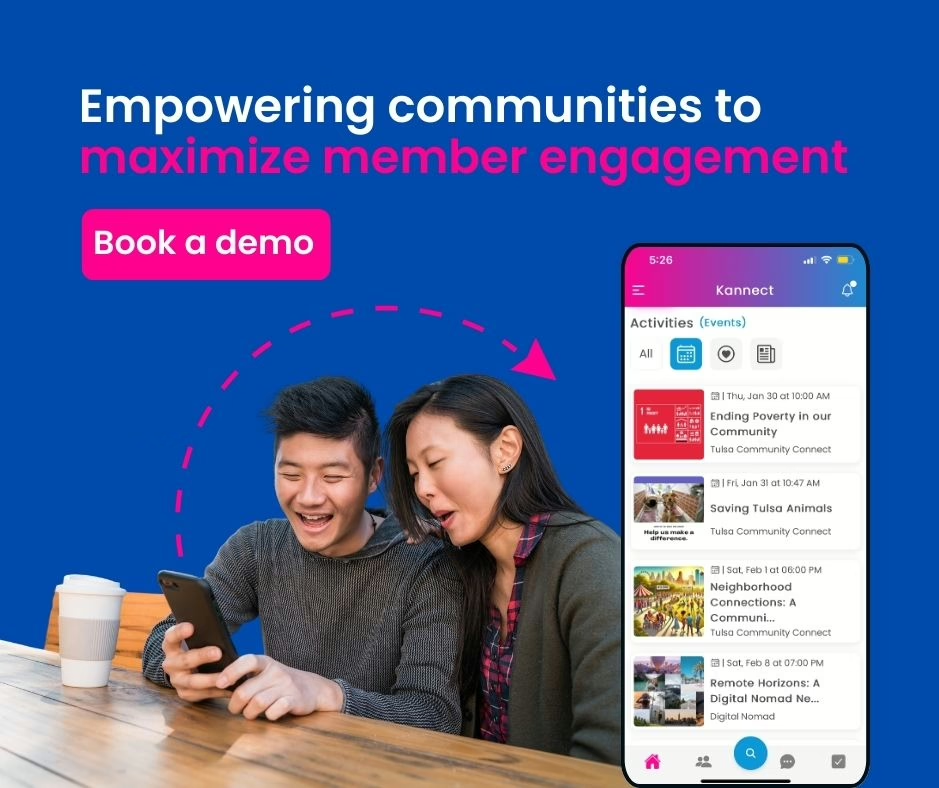
Inclusion Insights: Frequently Asked Questions
Q1: How does Kannect support community inclusion?
Kannect provides versatile tools such as Communication Management for open dialogue, Event Management for inclusive activities, and Content Management for educational resources, all designed to enhance community inclusion by promoting engagement and diversity.
Q2: What is community inclusion and how can it benefit my community?
Community inclusion involves creating an environment where all members feel valued and heard. It’s crucial for building strong, diverse, and healthy communities where mutual respect and empathy flourish.
Q3: How can community inclusion initiatives aid in building an inclusive community?
These services offer guidance, resources, and support in implementing inclusive practices and policies. They help communities welcome and engage diverse members effectively.
Q4: What are effective examples of community inclusion in practice?
Examples include organizing inclusive events, featuring member success stories, and establishing accessible initiatives. These actions demonstrate the commitment to embracing diversity.
Q5: Why is feedback important in fostering community inclusion?
Feedback enables continuous improvement of inclusion strategies by highlighting what’s working and where adjustments are needed. It reinforces the community’s commitment to inclusivity and growth.

